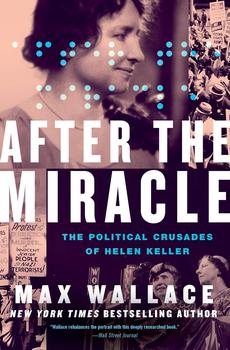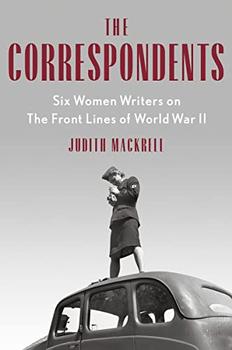Summary | Excerpt | Reviews | Beyond the book | Read-Alikes | Genres & Themes | Author Bio

The Political Crusades of Helen Keller
by Max WallaceMany people have heard one particular story about Helen Keller—how the saintly teacher, Annie Sullivan, put one of her deafblind student's hands under the flow of a water pump, and fingerspelled "W-A-T-E-R" into the other. In doing so, she introduced Keller to language and rescued her from a life of isolation. This narrative, while inspirational, is also highly oversimplified, and the focus on it has overshadowed the remarkable life Helen Keller went on to live. Max Wallace's fascinating book After the Miracle: The Political Crusades of Helen Keller introduces readers to a passionate woman whose actual beliefs and choices have often been ignored in favor of the anecdote from her youth.
The book begins by examining the context of the "miracle" story. Wallace provides an overview of the state of education for the deaf and blind at the time of Keller's childhood, including discussion of such figures as Laura Bridgman, a deafblind woman who became famous a generation before Helen, and Samuel Howe, who founded the Perkins School for the Blind where Bridgman, Annie Sullivan and Helen Keller all studied. Annie Sullivan's background and struggles with poverty and disability (she was also blind, though surgeries were able to temporarily return her sight) are also covered.
While the book does discuss Keller's personal life, the focus, as the title suggests, is on her political activism. She was a socialist and a disability advocate, caused outrage in her native Alabama by donating to the NAACP, and repeatedly called out antisemitism both in the United States and abroad. This aspect of her life often came into conflict with her career and economic situation; at various points she was supported by funds donated by wealthy individuals such as Andrew Carnegie, whose politics clashed with her own, and for much of her working life she was employed by the American Foundation for the Blind, which strongly discouraged her from expressing political opinions that might cause scandal so as to prevent the loss of donations. Despite the compromises she had to make to appease her benefactors and employer, she continuously used her status as a public figure to fight for causes she believed in. Wallace drills down into what evidence we have of her political views throughout her life, challenging previous biographers' assertions that Keller's socialism was a phase from which she moved on after early adulthood.
Wallace does not shy away from the less admirable aspects of Keller's politics. For instance, in 1915, a Chicago doctor infuriated the public when he refused to perform surgery on a newborn with disabilities, saying the baby would grow up to be "a burden to society and pollute the human race with his impure genes." This refusal resulted in the infant's death. Keller published an article soon after which called the doctor's decision a "service to society," and expressed the eugenicist view that "a human life is sacred only when it may be of some use to itself and the world." Her later advocacy work and strong opposition to Nazism indicate that her thoughts on the matter changed over time, but it is unclear when or to what extent.
The story of the water pump is an excellent example of a major throughline of both the book and mainstream views of Helen Keller's life—the ablest tendency to shift credit for Keller's accomplishments and opinions to those around her, minimizing her personal agency. Wallace gives multiple examples wherein controversial aspects of her life, such as joining the socialist party and later supporting communism, were blamed on the "influence" of friends or family. The book covers a wide swath of history for a single lifetime—from Jim Crow to apartheid, World War I to McCarthy's Red Scare, Helen Keller used her fame to fight for what she believed in. Wallace's writing is nuanced, neither diminishing her accomplishments nor overlooking her missteps, but instead returning Keller to the center of her own life story. After the Miracle is a portrait not of a saint or a miracle, but a woman with strong convictions living in a complicated world. I would highly recommend it for readers interested in civil rights and disability advocacy, or in 20th-century history more generally.
![]() This review was originally published in The BookBrowse Review in May 2023, and has been updated for the
April 2024 edition.
Click here to go to this issue.
This review was originally published in The BookBrowse Review in May 2023, and has been updated for the
April 2024 edition.
Click here to go to this issue.

If you liked After the Miracle, try these:

by Anna Funder
Published 2025
This is the story of the marriage behind some of the most famous literary works of the 20th century - and a probing consideration of what it means to be a wife and a writer in the modern world.

by Judith Mackrell
Published 2023
The riveting, untold history of a group of heroic women reporters who revolutionized the narrative of World War II - from Martha Gellhorn, who out-scooped her husband, Ernest Hemingway, to Lee Miller, a Vogue cover model turned war correspondent.
Your guide toexceptional books
BookBrowse seeks out and recommends the best in contemporary fiction and nonfiction—books that not only engage and entertain but also deepen our understanding of ourselves and the world around us.